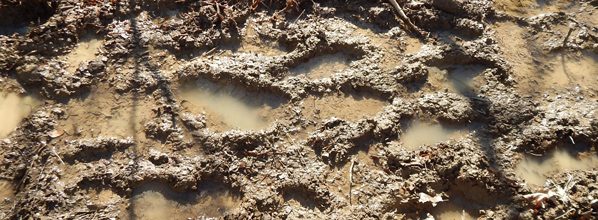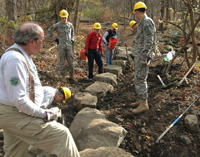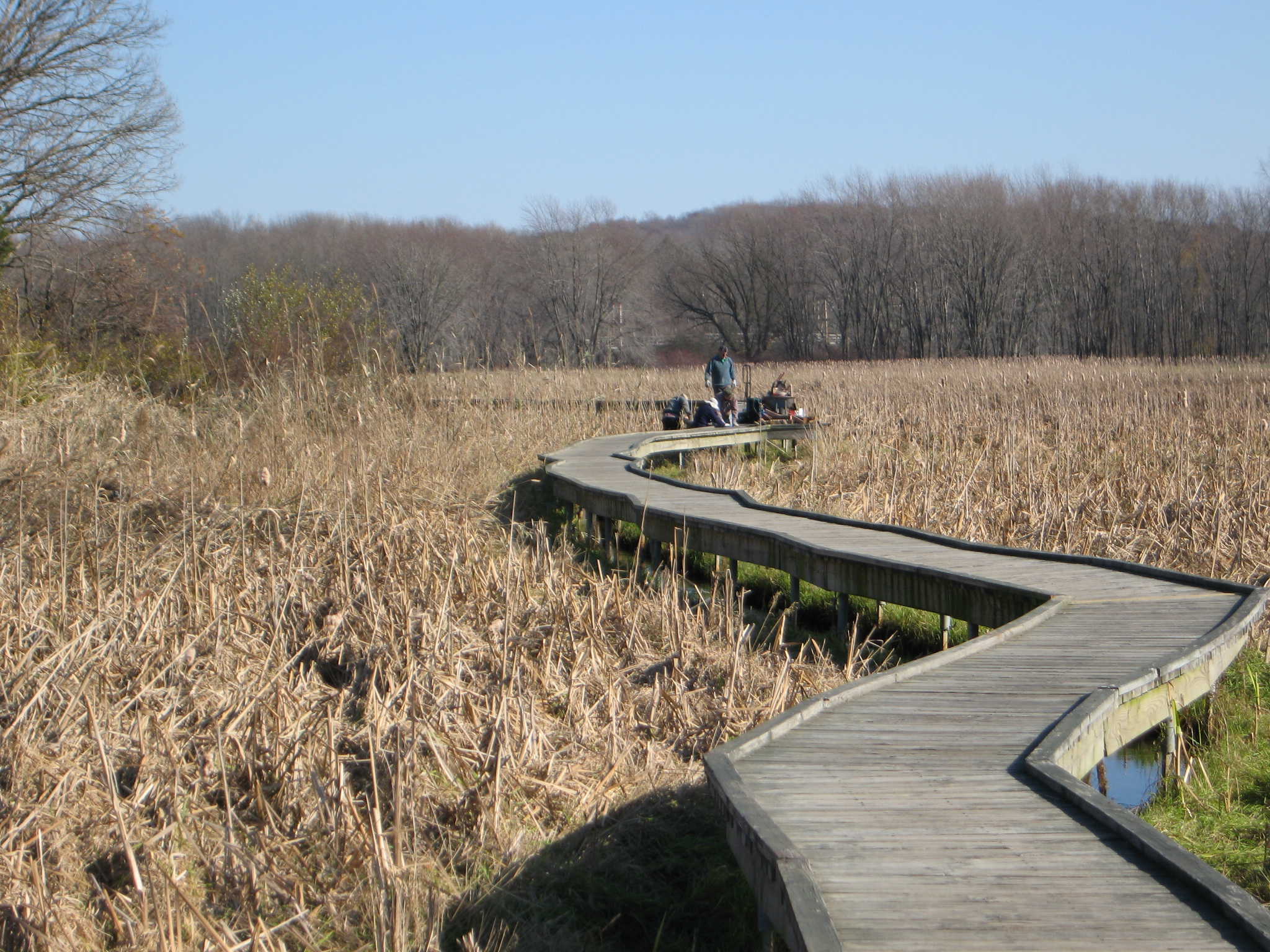Spring Is Here. And So Is Mud Season on Trails.
Title
Body

Yes, we want to walk around muddy patches when we come to them, and in spring, we may encounter them often. But walking around the mud ends up widening the trail, causing added impact to the environment we are out to enjoy and more maintenance issues for trail stewards.
Leave No Trace offers the following advice:
Be Ready to Get Muddy!
- Wear waterproof boots.
- Consider using gaiters
- Be prepared to hike or run down the middle of the trail even when wet or muddy – stepping off the designated trail to avoid mud or standing water can quickly lead to the creation of undesignated trails, which can lead to even more erosion.
So why do muddy patches happen and how to trail builders deal with them?
We asked our Trail Builder and Educator Ama Koenigshof to explain.
Muddy patches on trails are usually caused by a poor trail alignment that does not allow water to run off it, or by the development of a berm on the downhill side of the trail that then acts as a dam. The key to a sustainable, mud-free trail is to get the water flowing across the trail, not down it or standing still. A side-hill trail that follows the contours of the land will be a permanent solution if done correctly. That being said, muddy spots happen. Here are some ways we deal with them:
 Stepping Stones are a good solution if a trail corridor is narrow, if there is a good supply of large rock nearby, and if the trail is for pedestrians only. If the trail corridor is very wide (more than six feet), hikers will walk around stepping stones. When choosing stepping stones, the rocks should be at least 1 cubic foot in size with at least one nice flat side. Ideally, they are placed with a gap no larger than six inches between them to ensure comfortable walking.
Stepping Stones are a good solution if a trail corridor is narrow, if there is a good supply of large rock nearby, and if the trail is for pedestrians only. If the trail corridor is very wide (more than six feet), hikers will walk around stepping stones. When choosing stepping stones, the rocks should be at least 1 cubic foot in size with at least one nice flat side. Ideally, they are placed with a gap no larger than six inches between them to ensure comfortable walking.
Turnpike is a trail segment that is built to rise above wet ground. It is a good solution for any width trail corridor, when crush rock and mineral soil are nearby. Typically, each side of the tread way is lined with rock or logs that are dug into the ground and “set” in place. Crush rock fills the area between the sides; if the area is really muddy, the crush may be wrapped in geotextile. On top of all this is mineral soil, compacted to create a crowned tread surface that sheds water. Maintenance includes re-crowning the tread surface to encourage water runoff.
Corduroy is created when logs are placed side by side perpendicular to the path. It is a good solution when there is a supply of newly downed trees nearby. A certified chain sawyer or many dedicated people with handsaws cut the downed trees into pieces of similar diameter that are as long as the trail is wide. The trail tread way is dug out to be twice as deep as the diameter of the logs. The logs get placed side by side, perpendicular to the path of travel, and are recovered with the mud that was dug out. The key to corduroy as a successful solution is that the logs are dug deep enough into the ground that they never become exposed. If done correctly, the logs resist rot for hundreds of years and keep people from sinking into the slop.
Stone Paving –Think stone patio or cobblestone street. This solution is for puzzle lovers. Each rock is “set” at the same height with as few gaps as possible. Once the entire area is completed, it is covered with mineral soil to lock the structure together. This solution is great for high water flow areas.
Bog Bridging is a good solution if a trail corridor is narrow. Two full round log sills are “set” perpendicular to the path of travel while one or two long half rounds are suspended across the two sills and attached with large nails or screws creating a flat wooden walking surface above the muck. It can become slippery if always wet. Bog bridging is not the proper solution if there is ever running water in the area, because the structure will shift and possibly wash away.
 Puncheon and Boardwalk both use decking attached to stringers. With puncheon, the stringers are placed on sills “set” on the ground; with boardwalk the sills are raised on piers. The construction options are extensive, require carpentry skills, and can require specialized equipment.
Puncheon and Boardwalk both use decking attached to stringers. With puncheon, the stringers are placed on sills “set” on the ground; with boardwalk the sills are raised on piers. The construction options are extensive, require carpentry skills, and can require specialized equipment.
